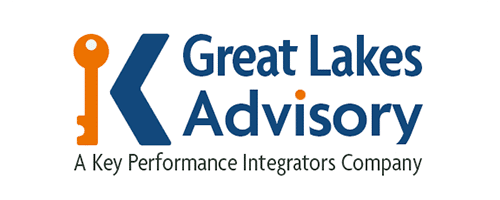Inefficient processes can cost businesses over a quarter of their labor hours and nearly a third of their annual revenue. Just one inefficient process can hurt multiple teams and departments if they all rely on it. Before you can start using optimization services to improve things in your company, it helps to know two questions and the answers to them.
First, what is efficiency in the workplace? Second, why is efficiency important in the workplace? From there, you can find ways to identify processes to improve and the potential solutions that improve things for you as an organization.
What Is Process Efficiency?
Inefficiency means your business isn’t getting enough out of what it’s putting into things. One way to measure inefficient work is to take the value of outputs, divide it by the value of inputs, and then multiply times 100. In most cases, anything less than 100% after this math is not processed efficiently enough.
How Inefficiency Impacts Your Business
Why is efficiency important in the workplace? Because anything else is just a needless waste of time, money, resources, and energy.

It Costs You Money
Dig deep enough into the numbers, and you might find that as much of a third of your operating costs are lost to inefficiency. When something costs more than ever to produce the same amount, it’s time to optimize things.
It Wastes Your Time
Lengthy processes can waste time, especially if anyone is close to a bottleneck and is just waiting on others to make things happen. Never waste a minute of your company’s time or resources.
It Reduces Quality
Every time you pass up an opportunity to improve your products or services, you’re giving consumers more of the same. Quality might even deteriorate over time as the competition puts you in their rearview mirror.
It Damages Morale
Employees’ morale and productivity are directly linked. When a company is not efficient enough, it’s not as capable of rewarding its labor force for its efforts and work. This results in dispirited and disengaged employees.
| Low Employee Morale Causes: | High Employee Morale Causes: |
|---|---|
| High turnover | Long-term employee satisfaction |
| Distrust | Collaboration |
| Inefficiency | Synergy |
| Slower growth | Efficiency |
| Need for micromanagement | Great communication |
| Lack of creativity | Flow of ideas |
| Low energy in the workplace | Low turnover |
Main Causes of Inefficiency in the Workplace
Barriers to productivity in the workplace might include outdated software, subpar communication, and manual operations that are naturally inefficient processes in the workplace. Improving organizational inefficiency is everyone’s responsibility.
Outdated Processes and Tools
Just because something is old doesn’t mean it has to go. Some telecommunications companies and insurance carriers still use programs based on DOS due to regulatory compliance demands. However, many technologies have modern versions that are faster, better, and more efficient. Certainly, look at anything analog your company is still doing and see if you can find a digital equivalent.
Manual Processes
Repetitive manual activities can rob employees of crucial productivity and time that could be spent on other matters. Also, repetitive manual tasks can have error rates as high as 40%. Automate anything you can, go digital when possible, and find ways of making such tasks steady habits for employees so they get through them quickly and with fewer errors.
Unnecessary Checks and Balances
Checks and balances are great to make sure that important situations are dealt with carefully and mindfully. However, if it takes three people to all sign off on one form, that process might have outgrown itself. Businesses want to grow, but they might also grow so much that individual employee power is stripped down to the point of things getting out of hand.
Poorly-Managed Meetings
Meetings themselves aren’t necessarily inefficient, but there can be a lot of inefficiency surrounding them. The average employee spends 4 hours a week preparing for meetings, the average meeting starts 6 minutes late, and 34% of all meetings wind up being unattended. Multiply those 6 minutes by 10 people around the table or on the call, and your business just lost a whole payroll hour for nothing.
Working in Silos
Many teams or departments might wind up collecting and storing their own set of information relevant to what they’re working on or even responsible for. That’s good, but not if they don’t share it with other stakeholders. This kind of informational structure is known as a silo, and when silo contents aren’t shared with others, there might be redundancy and even unnecessary competition between teams.
Poor Reporting
It’s good to work hard on something you planned, but if you don’t have specific key performance indicators and routine reporting of them, then how do you know how well you are doing? Miscommunication alone can create situations that eat up to 30% of your expenses and budget. Make sure you don’t have any missing data and be sure the data you are getting is accurate.
Poor Standardization
When one of your business processes is truly inefficient, employees are going to realize it pretty quickly when they’re the ones expected to do it. Many will get creative in how they do things and take matters into their own hands. Most will be faster or better than the stated process, but they’ll all be doing things differently. Standardization is the only way to ensure consistent results you can count on.
Lack of Clarity Regarding How Responsibility Is Assigned
It might be understandable if customers don’t know who is responsible for what within an organization. They’re just going to start at the first point of contact they can find and trust that person knows the direction to point them in. However, what if your employees don’t know who is responsible for what? If they’re only clear on their own role, they might start passing problems off without knowing who will solve them, so no one actually does.
Nepotism
Nepotism is when people in power within an organization only share the responsibilities and power with those who are closest to them. For those who are not in the good graces of the inner circle of the upper echelon, it quickly becomes obvious that promotions and leadership are not bestowed upon those who demonstrate the right qualities. When politics is rewarded over productivity, toxic culture and inefficiency arise.
Office Distractions
Office distractions can range from the general background noise to employees dropping by someone’s desk to constant notifications from emails and apps. While they each might only take a moment or a few seconds, they add up to a cumulative drag on productivity over the course of a typical day. That’s not even factoring in the time it takes for employees to re-engage the task at hand.
Morale-Damaging Culture
It would be nice to think that workplace bullying is all in the past, but your organization might have leaders that still engage in it. You can also have employees that experienced it at other places and carry their trauma into your organization. Toxic work cultures deflate motivation quickly and ruin productivity. Set high standards for everyone to conduct themselves by.
10 Ways to Increase Efficiency in the Workplace
Preventing inefficiency in the workplace would be the best way to deal with things. However, it’s not always possible. If you need professional expertise in how to increase efficiency in the workplace, that is certainly available to you.
#1. Upgrade Business Tools
Give your team the technology that lets them get things done faster, more accurately, and better than ever before. That doesn’t always mean buying the latest and greatest things, however. Technology advances so quickly that being a little behind the cutting edge can put you in a cost-efficient place with options that have matured through patches and fixes for security and stability.
#2. Share Knowledge
Off-site team-building activities can be a useful bridge to establishing relationships and interpersonal connections between information silos. When data starts flowing freely within your organization, miscommunications subside and needless competition and turf wars are a thing of the past. You have to lead by example here in your communications with those above you, around you, and below you.
#3. Build Trust
If you feel the need to constantly monitor employees, then there’s a problem. In some cases, it might be the employee. However, it might also be you. Many companies benefit from leaders only checking in with employees weekly to see how they’re doing. Giving them free rein shows you trust them, and they might just take that empowerment to new levels of productivity.
#4. Open Feedback Channels
Sometimes, the only thing employees need to be more efficient is to know how they can do better. Regular, helpful, and constructive feedback is how you can accomplish that. Alternatively, they might be more efficient simply if they believe they are heard. Employee surveys and suggestion boxes, plus just listening to them yourselves, are all ways you can accomplish two-way communication in the workplace.
#5. Increase Flexibility
Allowing employees just one day of remote work per week can boost their efficiency by nearly 15%. The ability for remote work or flexible schedules is a huge demand in the modern marketplace, but it’s not just people looking to avoid their colleagues and bosses. It does show trust, and that is rewarded with more productivity and efficiency.
#6. Manage Time Better
Know what kinds of communication mediums are important to the message and the urgency of a situation. Is a massive meeting necessary when an email will do? Does everyone need to be looped in? Or could you have one phone call or a face-to-face conversation? Communication needs to be effective, but it should also be efficient. Don’t waste anyone’s time if you can avoid it.
#7. Automate Processes
Anytime you automate something using technology, you should reduce the amount of payroll spent on the task previously. You could save that money or just watch productivity go up as people are freed up to work on other things. Whether it’s self-serve checkouts in grocery stores or AI customer service bots on websites, automating things is happening everywhere around you.
#8. Clean Up Your Company Culture
Company culture can impact everything from productivity to profitability. Everyone can usually feel it when the culture is off, but discerning and rooting out the sources of toxicity and inflexibility can take work. Do it anyway. Trust and empower your employees, offer training that leads to actual advancements, and always campaign with others for positive corporate cultural changes within your organization.
#9. Reward and Recognize Efficiency
When you recognize efficiency among your employees, you need to reward it. That should inspire others to follow suit, but you’ll at least keep the rewarded individuals motivated to stay the course. Cash rewards and gift cards get spent quickly, so try to use things like paid days off, new technology, or tickets to local events and attractions they can use.
#10. Optimize Processes
Anytime that you optimize a process, you should enjoy two benefits. The first should be an improved process, but the second should be improved efficiency to any other processes it touches. If you think that your business could benefit from professional optimization services, then schedule your arrangements now.
Conclusion
Inefficiency at work can eat up a lot of your time when you could be more focused on growing your business. Everyone who works for you could be more productive. If you need an industry specialist who can help you identify causes of inefficiency in an organization, then find one and convey your needs to them promptly.




